Abstract
The indirect fluorescent antibody technique has been used to titrate patients' antibody against Toxoplasma gondii. Rigorous tests of the immunological validity of the method were made. The reactions of the gamma globulin of human immune serum with Toxoplasma gondii and fluorescent rabbit anti-human gamma globulin were thus shown to be specific. Thereafter the technique could be used with confidence to detect the reaction between doubling dilutions of patient's serum and smears of unfixed Toxoplasma gondii. In this way, titres were obtained with the indirect fluorescent antibody technique which agreed well with those of the dye test at both low and high levels of antibody.
Compared with the dye test, the indirect fluorescent antibody technique has many advantages. The end-point is sharp and obviates the counting of stained and unstained organisms; supplies of antibody-free accessory factor sera are not needed; prozones undetected by the dye test are strongly positive at screening dilutions, the reagents keep indefinitely and lend themselves to preparation, standardization, and issue by a central reference laboratory.
Full text
PDF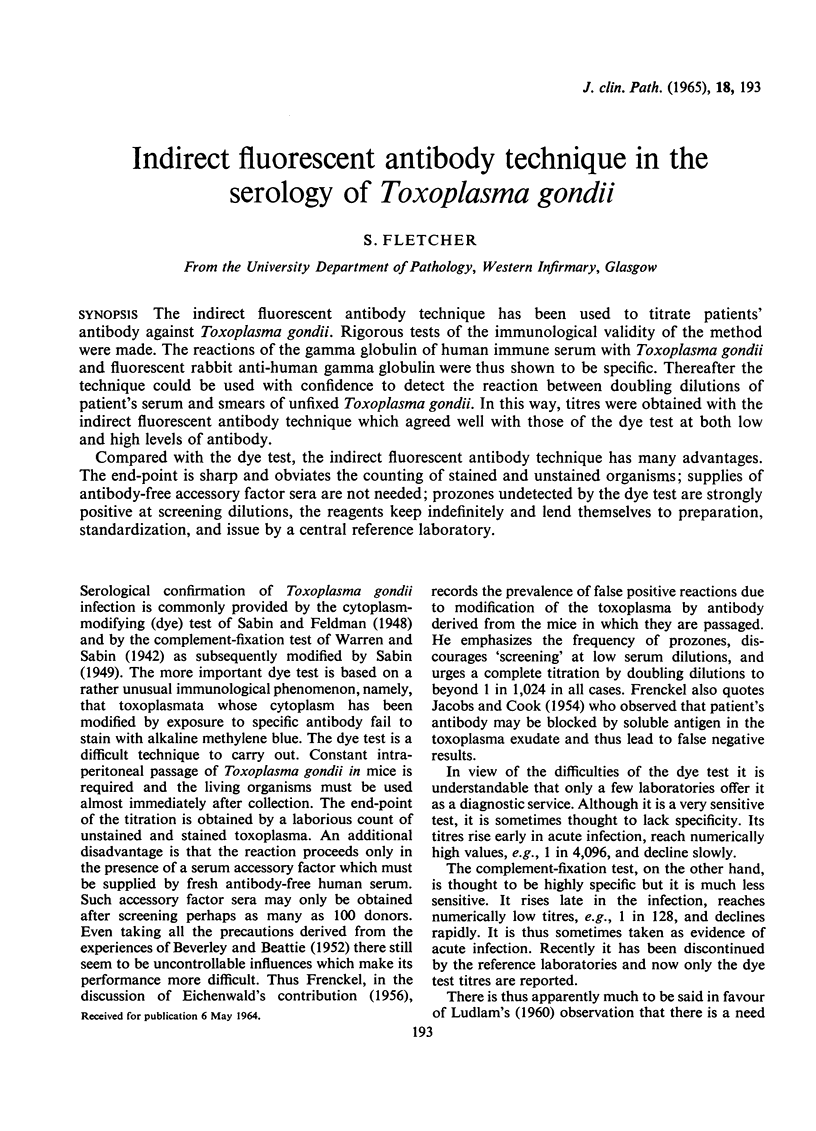
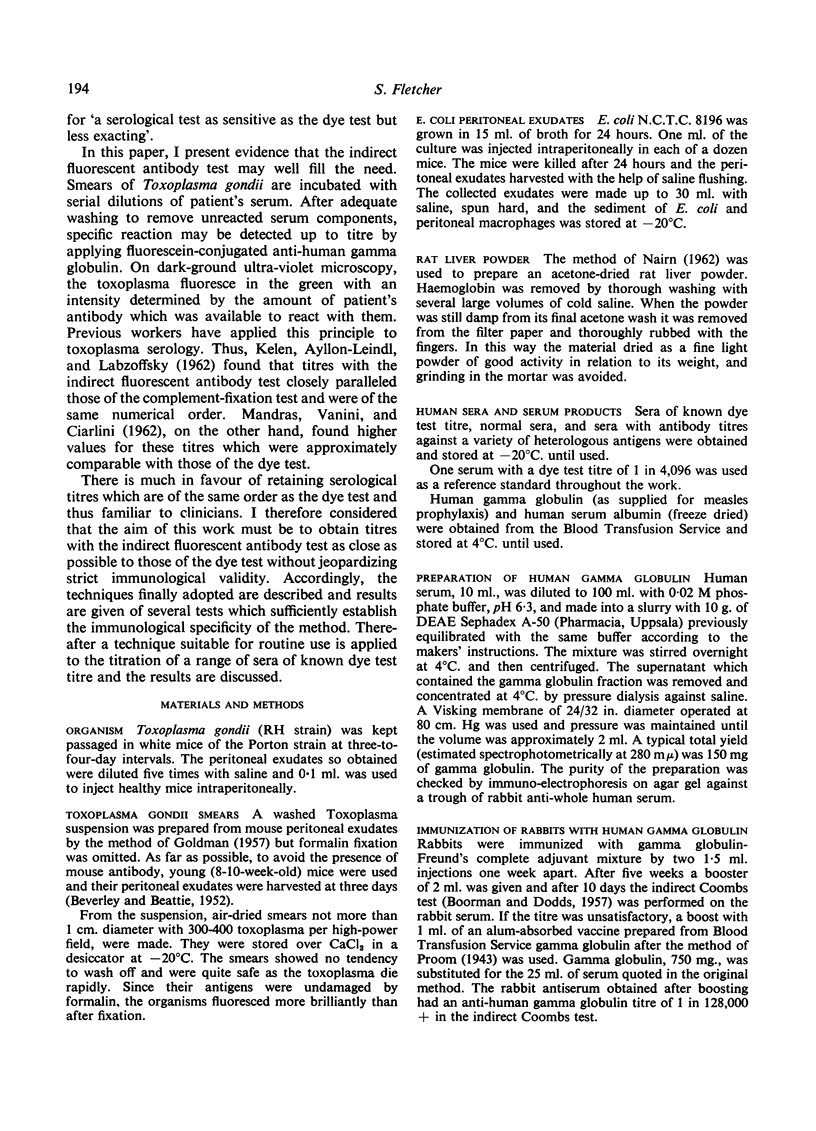
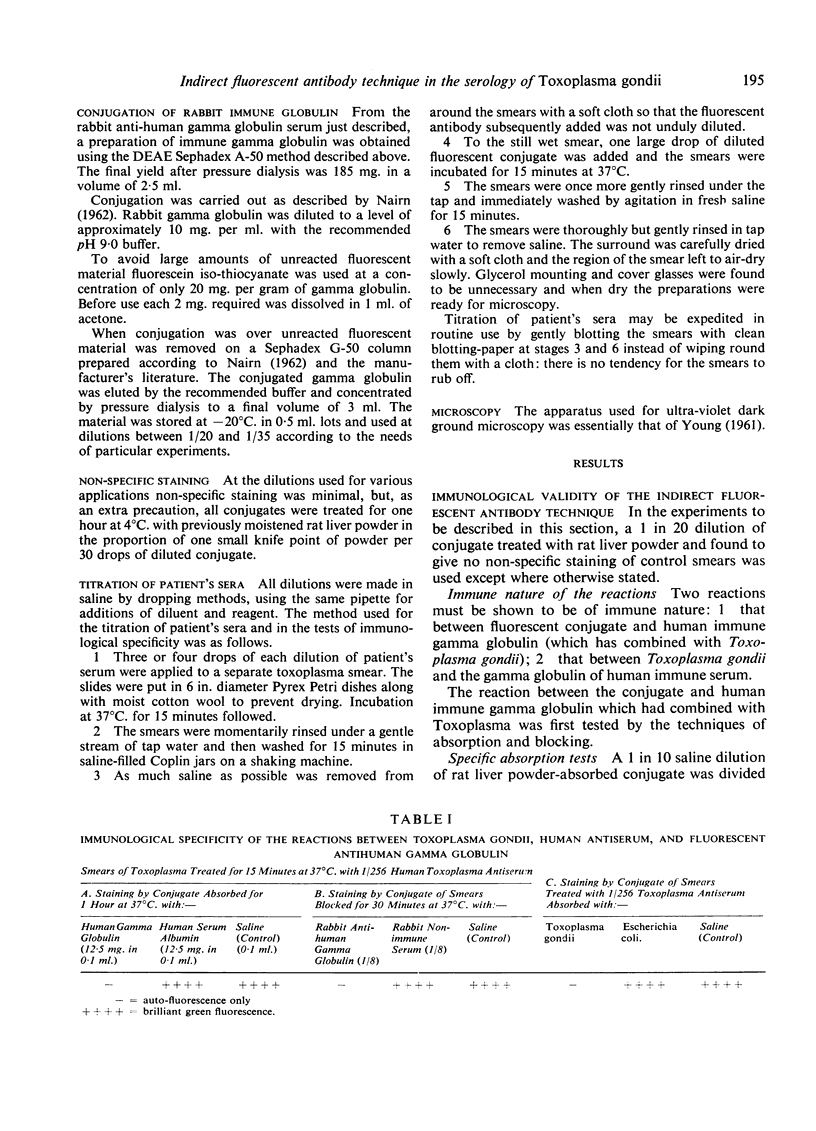
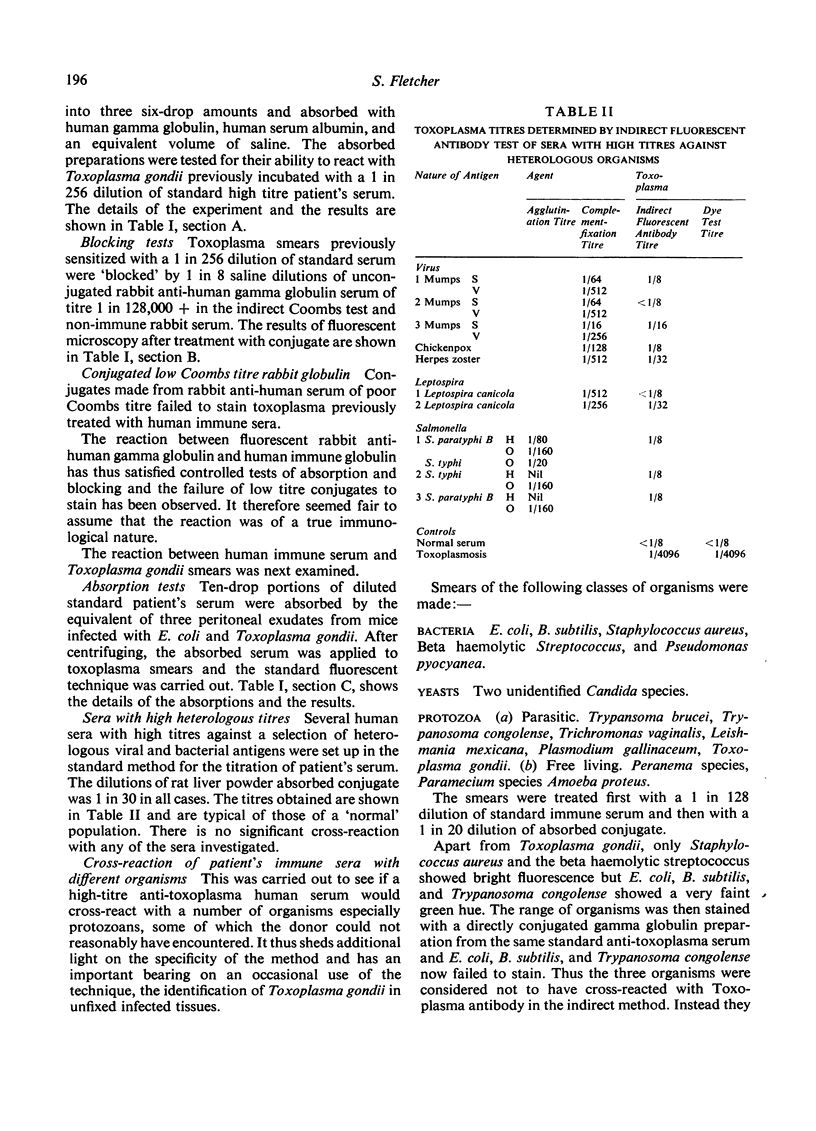
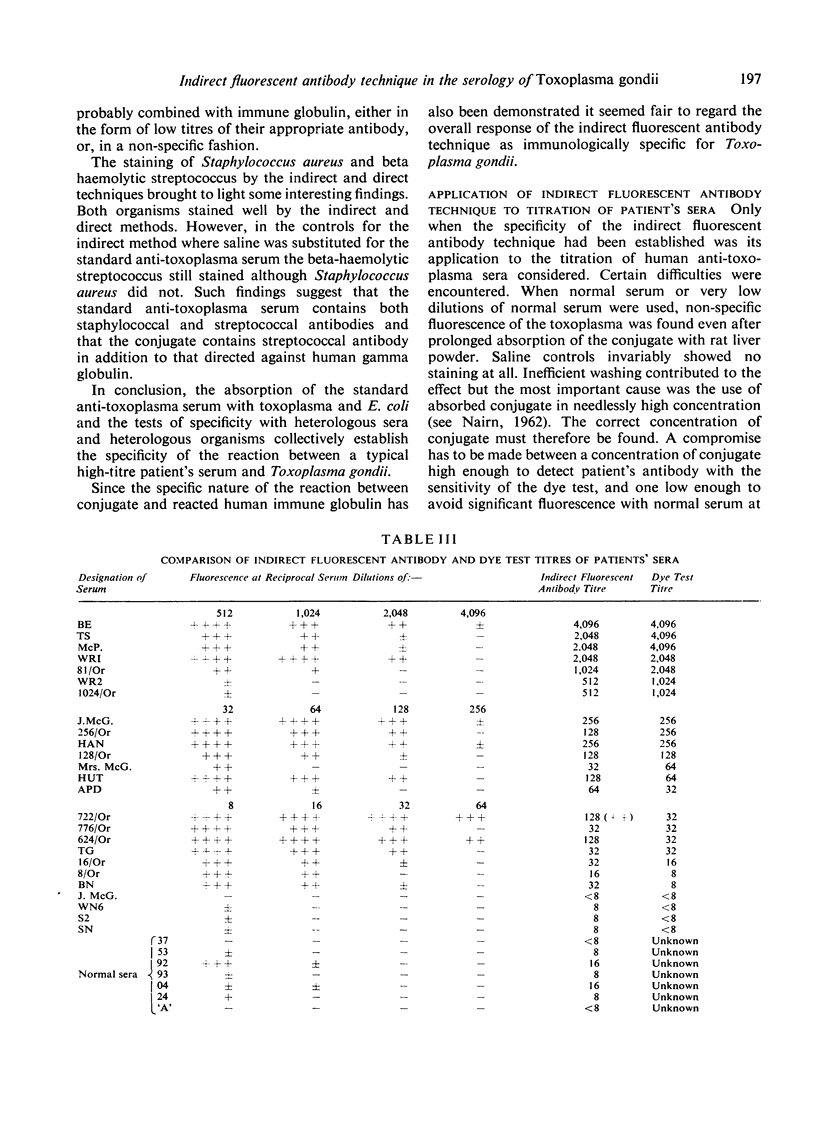
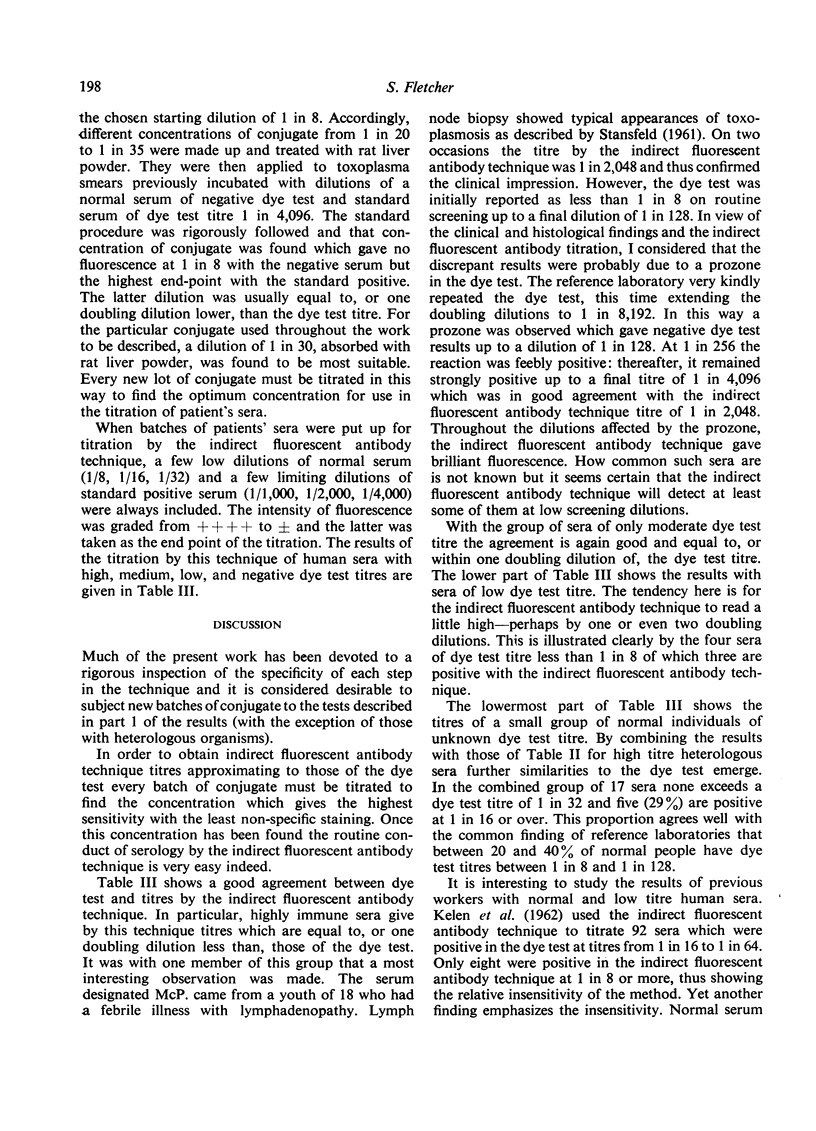
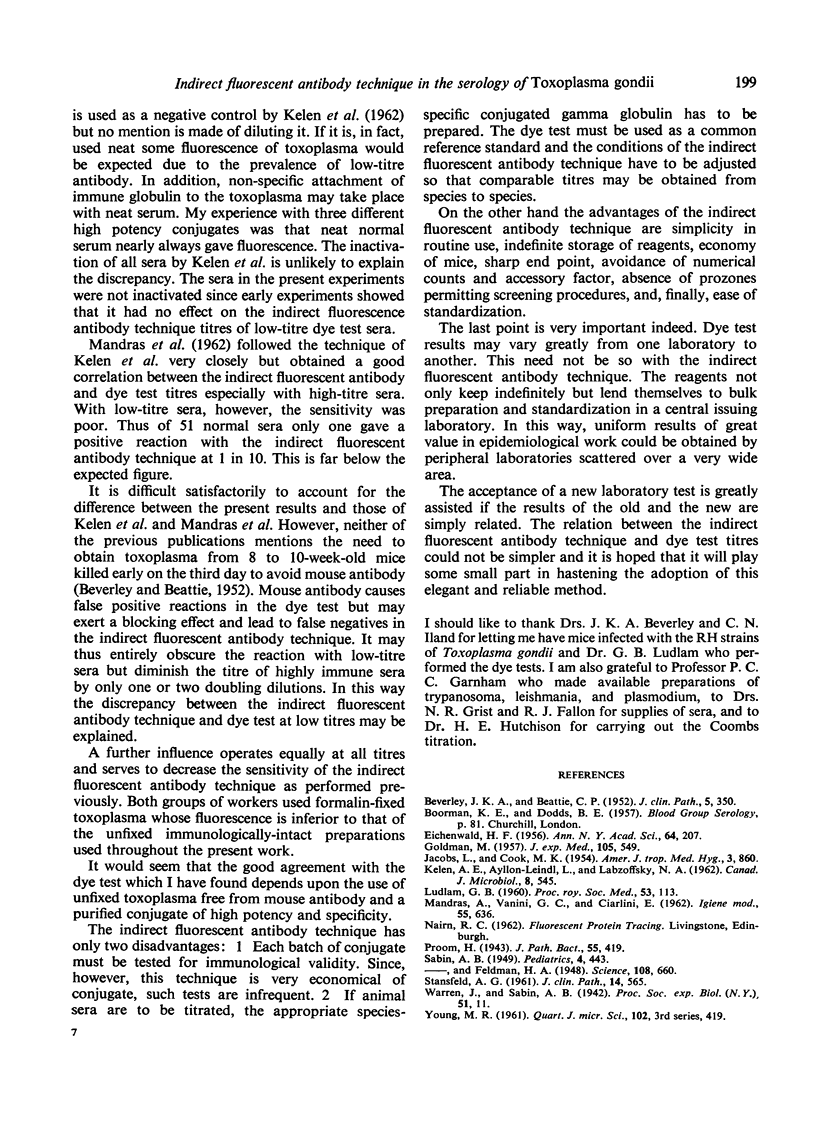
Selected References
These references are in PubMed. This may not be the complete list of references from this article.
- BEVERLEY J. K. A., BEATTIE C. P. Standardization of the dye test for toxoplasmosis. J Clin Pathol. 1952 Nov;5(4):350–353. doi: 10.1136/jcp.5.4.350. [DOI] [PMC free article] [PubMed] [Google Scholar]
- GOLDMAN M. Staining Toxoplasma gondii with fluorescein-labelled antibody. I. The reaction in smears of peritoneal exudate. J Exp Med. 1957 Jun 1;105(6):549–556. doi: 10.1084/jem.105.6.549. [DOI] [PMC free article] [PubMed] [Google Scholar]
- JACOBS L., COOK M. K. Variations in the dye test for toxoplasmosis. Am J Trop Med Hyg. 1954 Sep;3(5):860–867. doi: 10.4269/ajtmh.1954.3.860. [DOI] [PubMed] [Google Scholar]
- LUDLAM G. B. Laboratory diagnosis of toxoplasmosis. Proc R Soc Med. 1960 Feb;53:113–116. [PubMed] [Google Scholar]
- Sabin A. B., Feldman H. A. Dyes as Microchemical Indicators of a New Immunity Phenomenon Affecting a Protozoon Parasite (Toxoplasma). Science. 1948 Dec 10;108(2815):660–663. doi: 10.1126/science.108.2815.660. [DOI] [PubMed] [Google Scholar]
- Stansfeld A. G. The histological diagnosis of toxoplasmic lymphadenitis. J Clin Pathol. 1961 Nov;14(6):565–573. doi: 10.1136/jcp.14.6.565. [DOI] [PMC free article] [PubMed] [Google Scholar]


